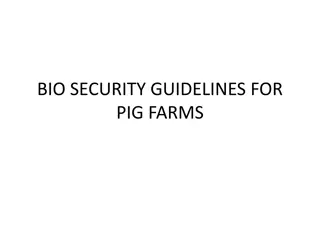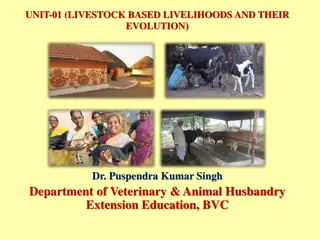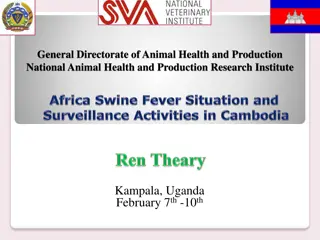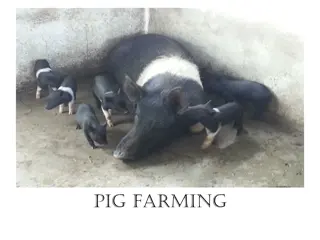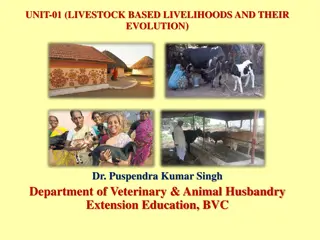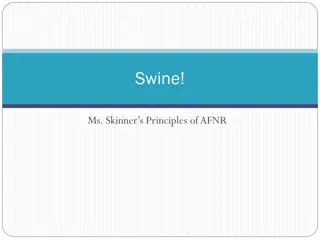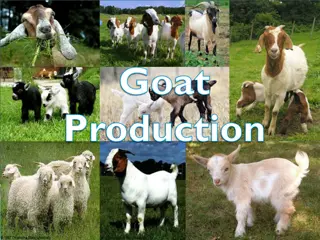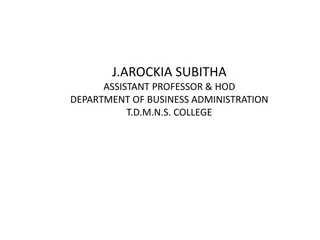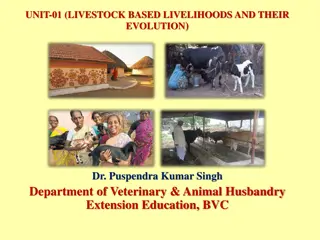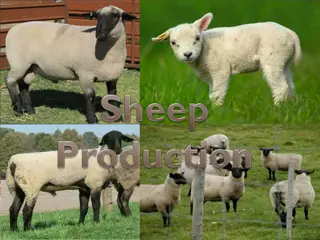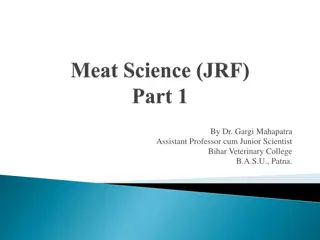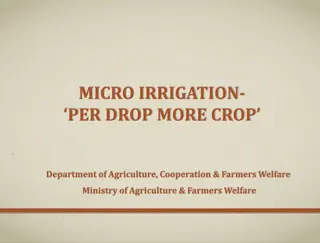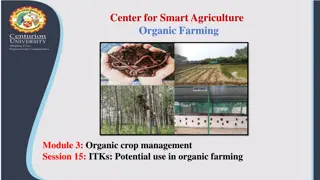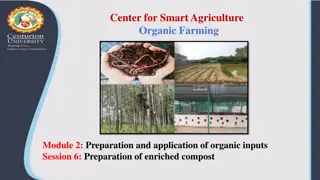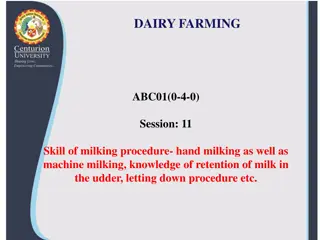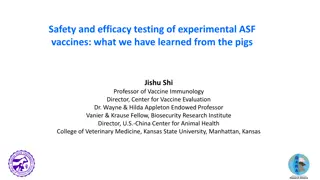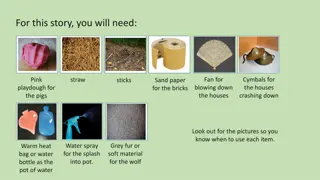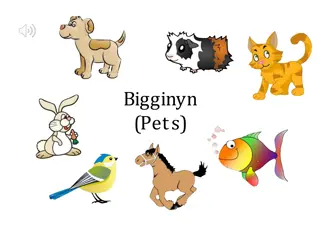Pig Farming Essentials
Explore the terminology, breeds, management practices, feeding, show preparation, animal behavior, growth and development, health evaluation, and more in the world of pig farming. Learn about different breeds like Berkshire, Chester White, Duroc, and Hampshire, and understand essential concepts such as needle teeth, farrowing, feeder pigs, and PSE meat. Enhance your knowledge of pig farming practices with this comprehensive guide.
Download Presentation

Please find below an Image/Link to download the presentation.
The content on the website is provided AS IS for your information and personal use only. It may not be sold, licensed, or shared on other websites without obtaining consent from the author. Download presentation by click this link. If you encounter any issues during the download, it is possible that the publisher has removed the file from their server.
E N D
Presentation Transcript
OBJECTIVES Terminology Breeds Management Practices Feeding Show Preparation Animal Behavior Animal Growth and Development Animal Health Evaluation
Boar A male of breeding age Berkshire
Sow A mature female that has produced young. Hampshire
Gilt An immature female Spots
Barrow A castrated male Poland China
Farrow Act of giving birth Yorkshire
Feeder Pig A weaned pig ready to finish for slaughter Pietrain
Needle teeth Set of 8 very sharp teeth in swine that are usually removed from days old piglets to prevent injury to other piglets and sow s udder.
PSE (Pale, Soft, Exudative Meat characterized by its pale color, lack of firmness, and fluid (exudate) dripping from its cut surfaces. Back to Objectives
Berkshire Originated in England Black color, white points and nose Short faced with erect ears Early-maturing Juicy, flavorful, tender meat
Chester White Developed in the United States White with drooping ears Large litters and excellent mothering ability
Duroc Developed in the United States Reddish brown in color Drooping ears Quick muscle growth Aggressive
Hampshire Developed in the United States Black with a white belt and erect ears Well-muscled, rapid growers Excellent mothers Good tempered Good carcass quality
Landrace Originated in Denmark White in color with huge drooping ears Longer than other breeds because of extra vertebrae More confinement adaptable
Pietrain Originated in Belgium Black and white spotted with erect ears High proportion of lean to fat Often carries the gene for Porcine Stress Syndrome Purebreds rare, instead used in crossbreeding programs
POLAND CHINA Developed in the United States Black with white patches, drooping ears, and large size Maximum weight at any given age Excellent feeders gain readily Quiet nature and hardy constitution
Spotted Swine Developed in the United States Black and white spotted with drooping ears Able to transmit their fast- gaining, feed efficient, meat qualities to their offspring
VIETNAMESE POTBELLY Developed in Vietnam Average 3-ft long, 15- inches tall, and 70 150 lbs Solid black to solid white with a variety of spots Used as pets
Yorkshire Originated in England White with erect ears Mother breed - large litters and excellent milking, and mothering ability Muscular with high proportion of lean meat Back to Objectives
METHODS OF IDENTIFICATION Ear notching Ear tags Ear tattooing
Ear Notches Method of permanent identification Pigs are ear notched using a special type of pliers that leave a V shape in their ear.
Ear Notching Depicts both a litter and individual number. Litter number is placed in the right ear Pig number placed in the left ear
Ear tags Easily read identification Usually used once you have selected which pigs you will keep. Available in different shapes
Ear tattooing Another form of permanent identification The thinner part of the lower ear is most suitable for tattooing.
PROCESSING PIGLETS Recommended 1-4 days post weaning. The steps of processing are: Clip needle teeth Cut navel cord Iron injection Dock tails Castrate males Ear notch
CLIP NEEDLE TEETH Piglets have 8 needle teeth located on the sides of upper and low jaws Clipped to prevent biting of littermates or the sows udder
CUT NAVEL CORD Cut to approximately 1 to 1 inches in length and dipped in iodine solution.
IRON INJECTIONS Given to prevent anemia which can result due to the low iron content of milk.
DOCK TAILS Cut to about 1 inch with side cutters Prevents tail biting and cannibalism by pen mates and possible infection of tail or spinal cord
CASTRATION Performed on male market hogs to prevent undesirable boar odor or taint associated with cooked pork from intact males
EAR NOTCHING Identifies which litter pigs came from and so determine reproductive ability of sows. Identifies individual pigs
FARROWING Sows moved into farrowing crates or pens one week before farrowing date. Once farrowing begins, piglets should be delivered in 15- 20 minute intervals Piglets average 2.5 - 4 lbs.
INDICATIONS OF FARROWING Restlessness Swelling of vulva Fullness of udder Milk letdown Fluids present from vulva
FARROWING FACILITIES Clean, dry, and draft-free Temperature of 65 F to 75 F with supplemental zone heat for piglets Guardrails about 6 from pen wall and 8 up from floor to prevent crushing Crates to restrict the sow - typically 5 wide and 7 long Back to Objectives
FEEDING PROGRAM Must balance cost and nutrient requirements Feed according to the requirements of the animal s stage of development Some factors affecting nutrient requirements: Quality of the diet: energy, by-products, molds, etc Breed, sex, and genetics of pigs Stage of development of pig Amount of time to finish pig
FEEDING PRACTICES Self feeders allows young pigs to feed at will Environmental temperature can affect appetite Ideal temperature is 60 to 70 F. Wetting pigs down on hot days will cool them off and improve appetite
WATER Water is the most essential nutrient required by a pig Always provide fresh, clean water If pigs are kept outdoors, haul warm water to them during cold weather Back to Objectives
HANDLING PIGS Move slowly and deliberately when driving pigs Spend time with the pig to help it adjust to human interaction Practice show ring activities at home and again upon arrival to a show.
EXERCISE Begin exercising pigs two months before a show Pigs do not sweat. Use caution when exercising to prevent overheating Use a whip or livestock cane to teach pigs to respond to commands such as turning. Do not strike on the ham or hip this will cause the pig to arch it s back and look unnatural. Use gentle taps around the head
EQUIPMENT garden hose (to wash pig) rubber boots small brush that fits in the pocket of your pants scrub brush mild soap clippers cane rags (to wash out ears and wipe off feet) water bucket and feed pan Back to Objectives
DEVELOPMENT OF BEHAVIOR Genetics and experience determines how an animal behaves Some pigs are genetic carriers of a porcine stress gene(PSS) This can cause increased excitability and nervousness Can even lead to death due to extreme stress
INTELLIGENCE Pigs are intelligent and curious They learn quickly and respond well to positive reinforcement. It is important to make new experiences positive
BEHAVIOR Pigs frighten easily to unfamiliar sights, smells, and sounds Sensitive to sharp contrast A pig may balk if it sees shadows, puddles, bright spots, change in flooring type or texture, or drains



